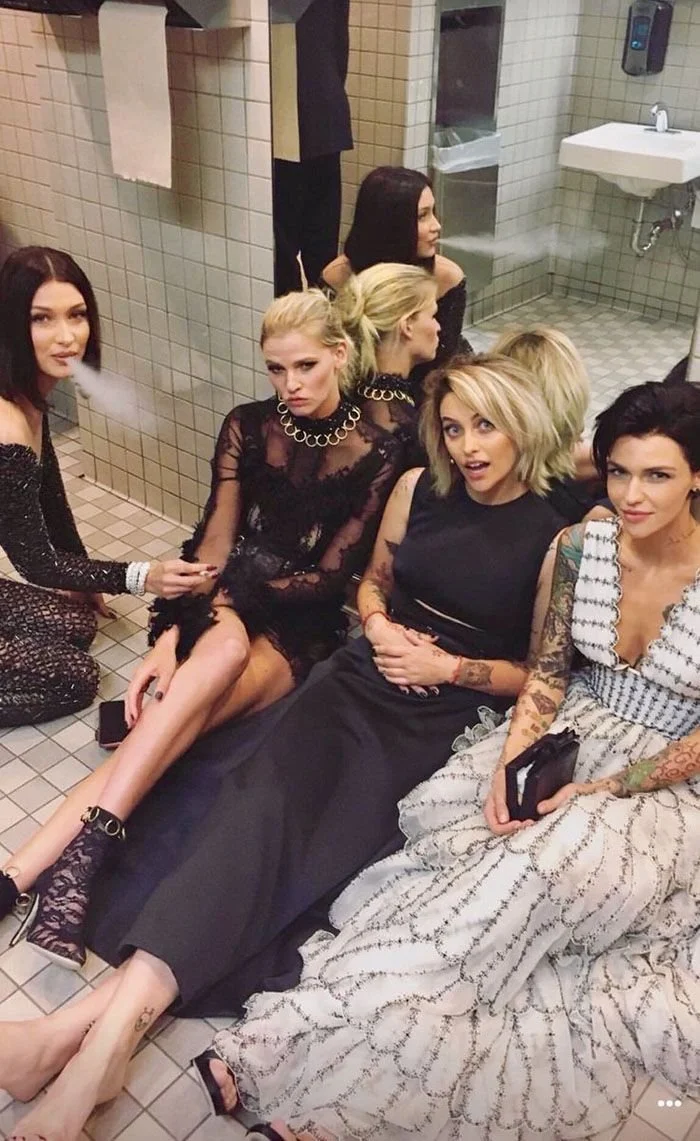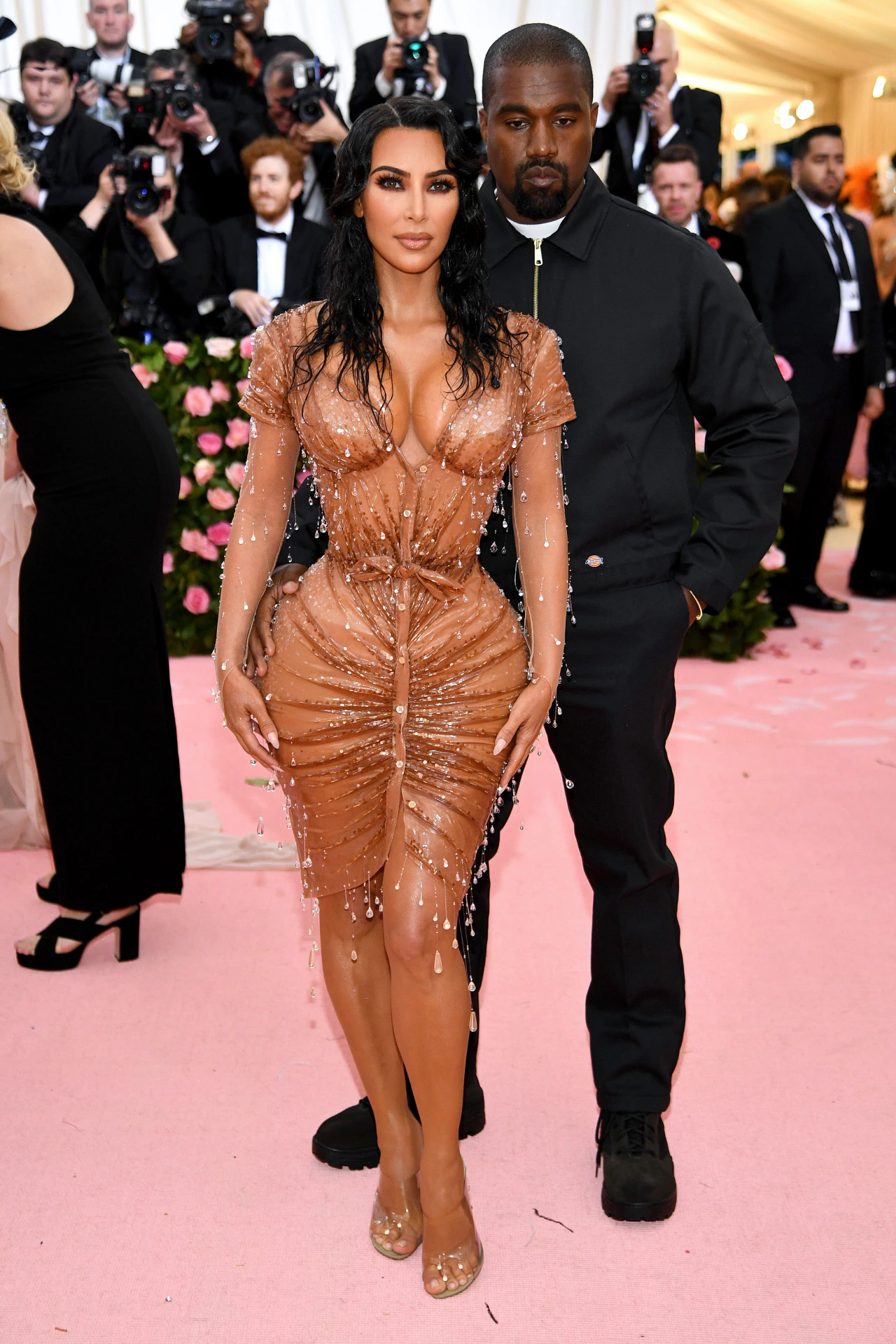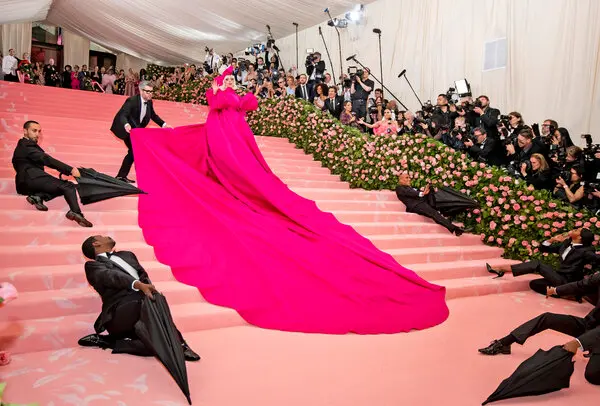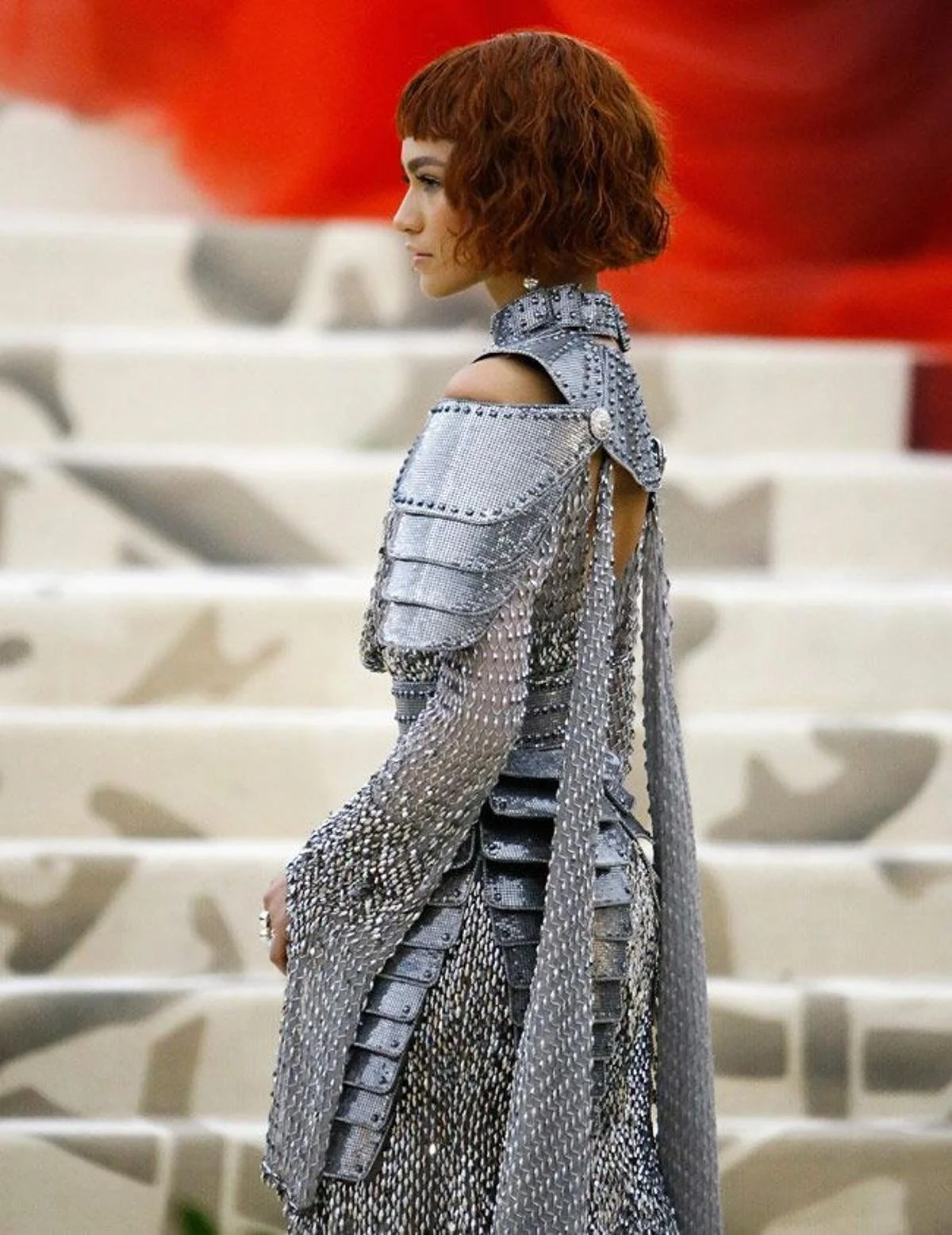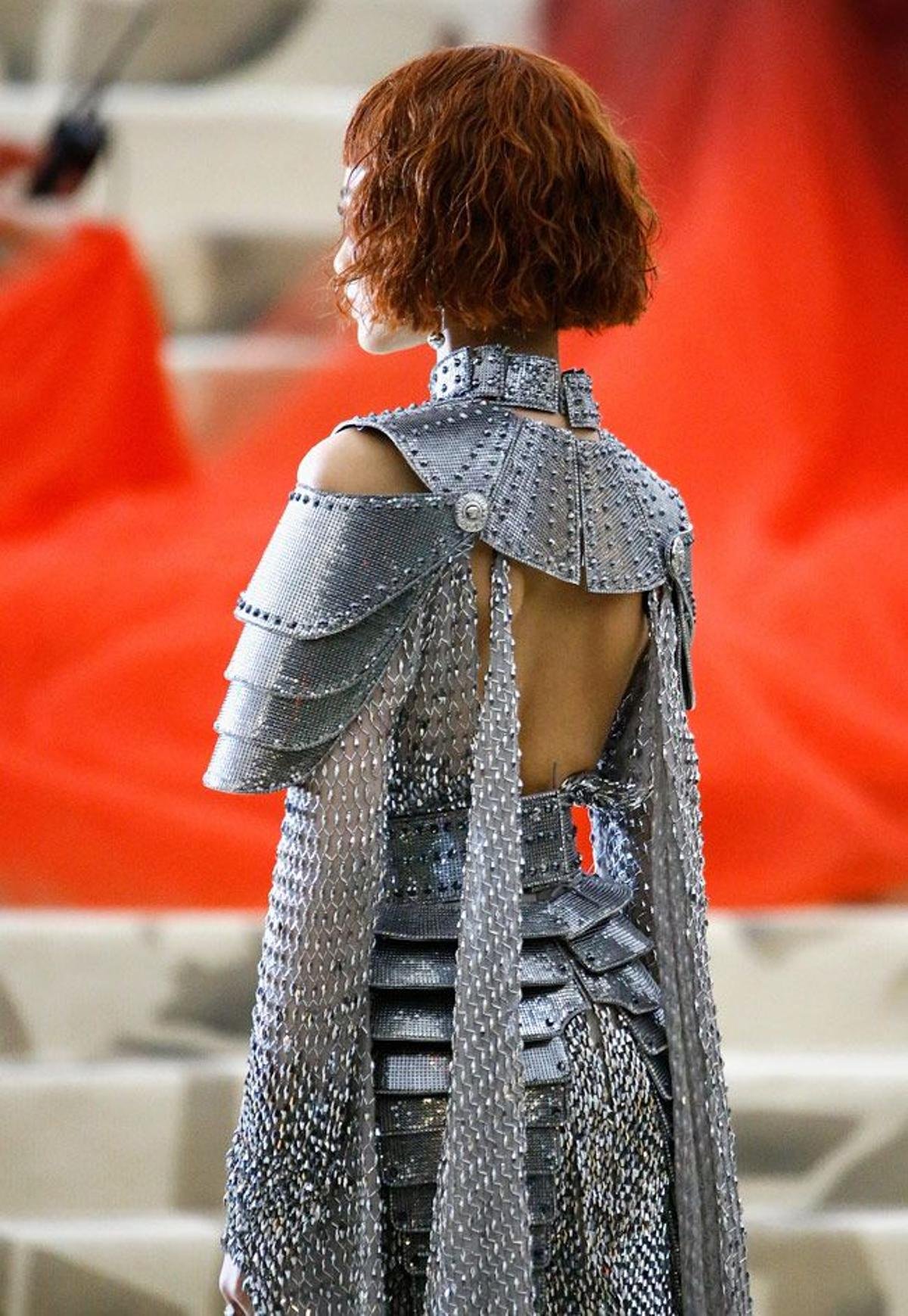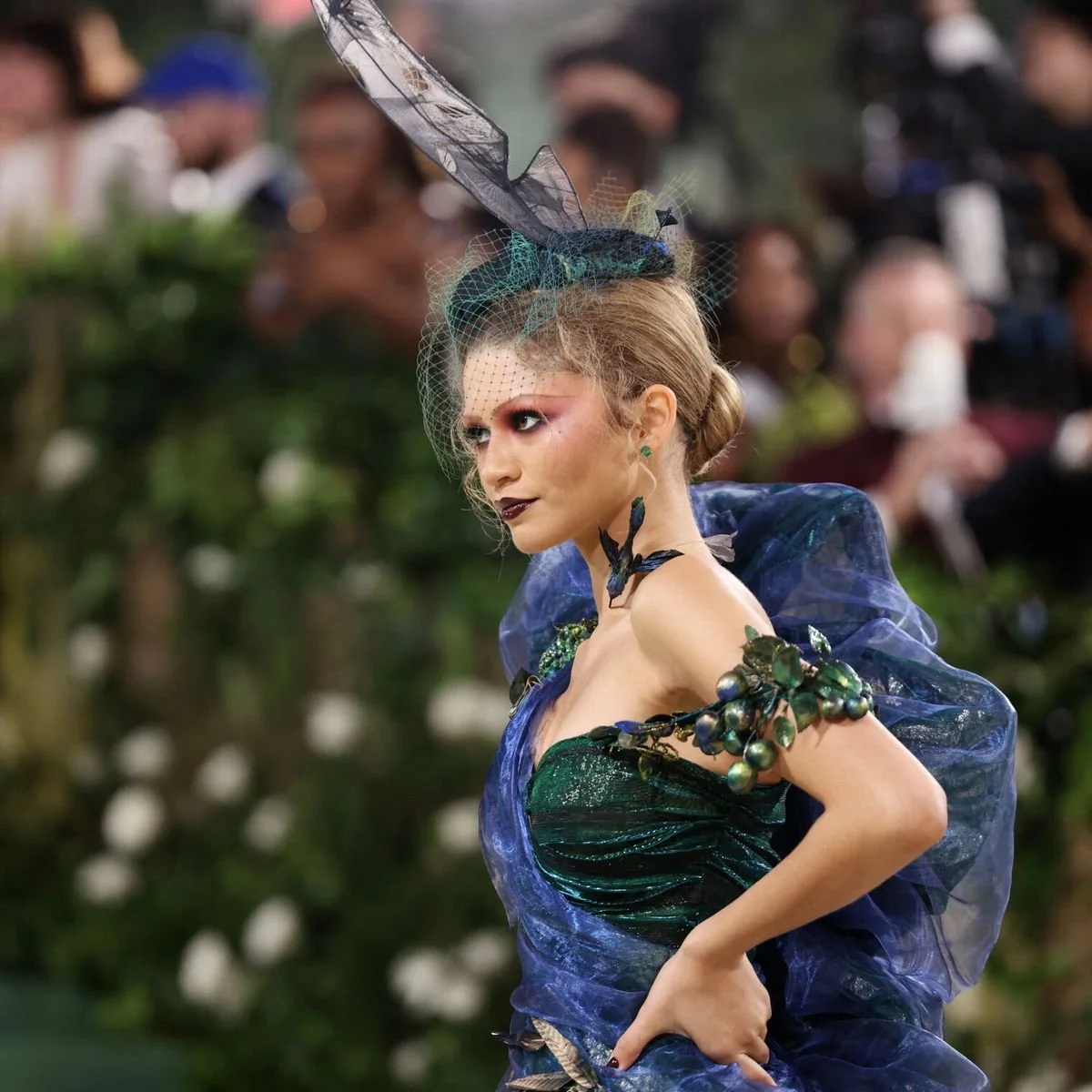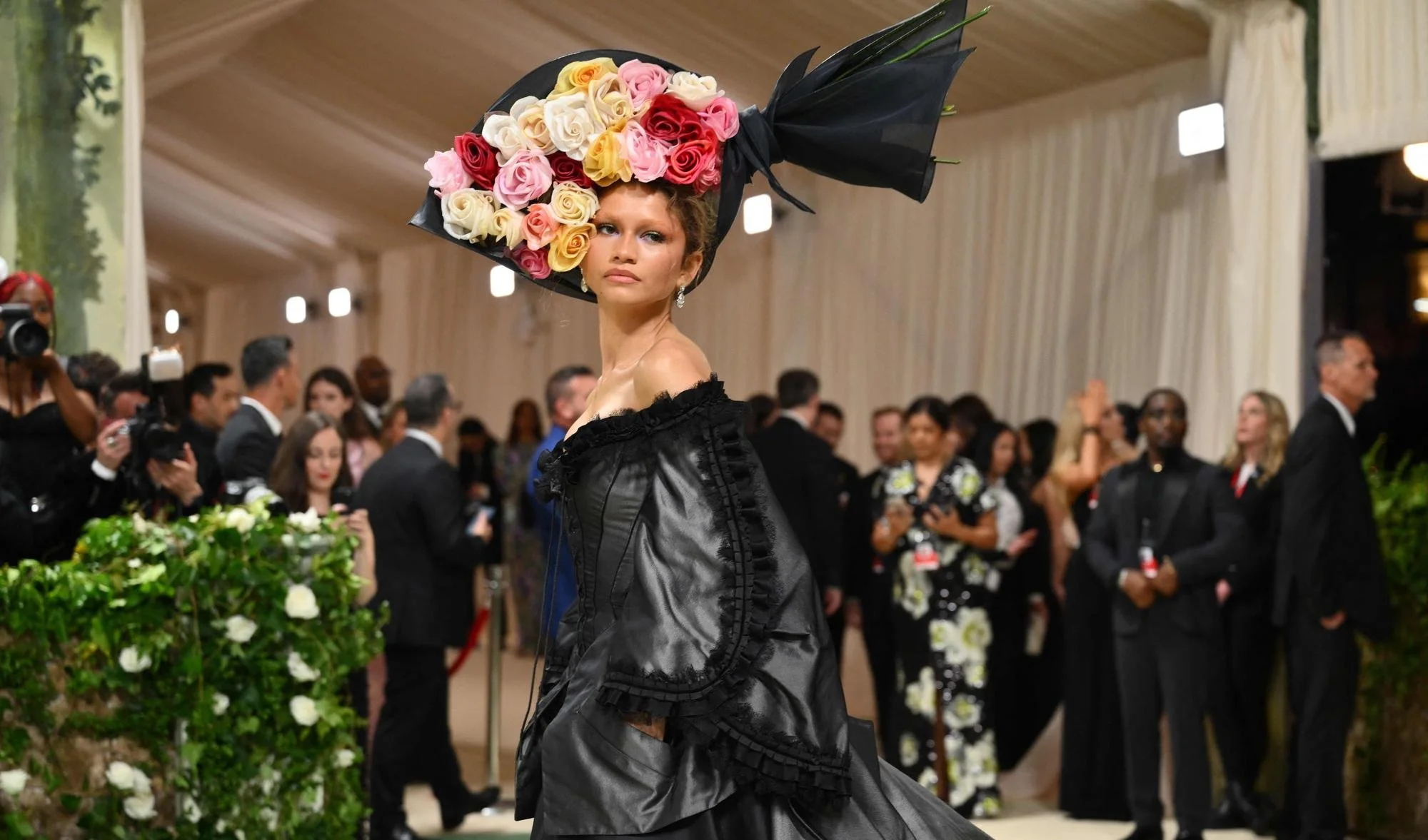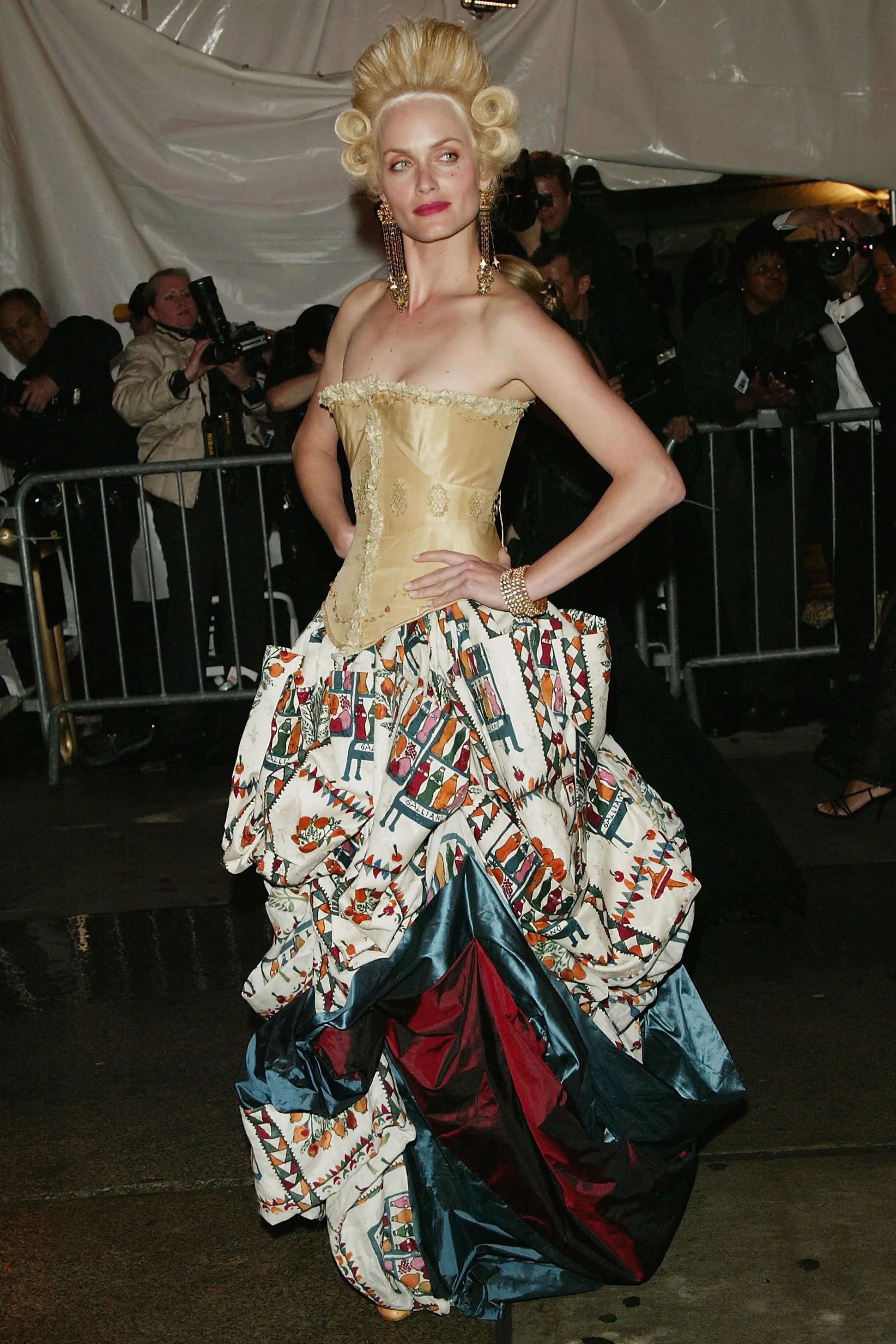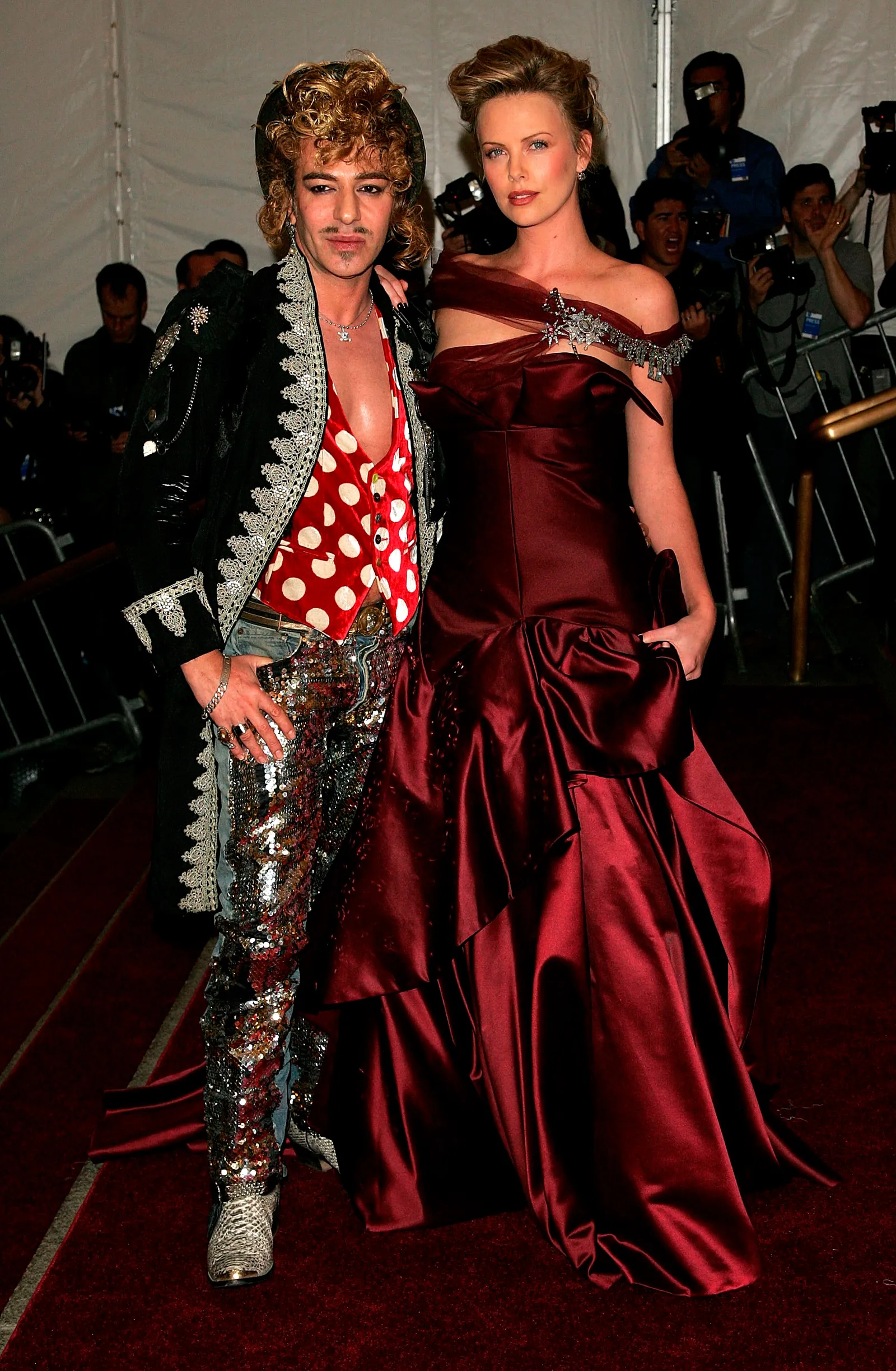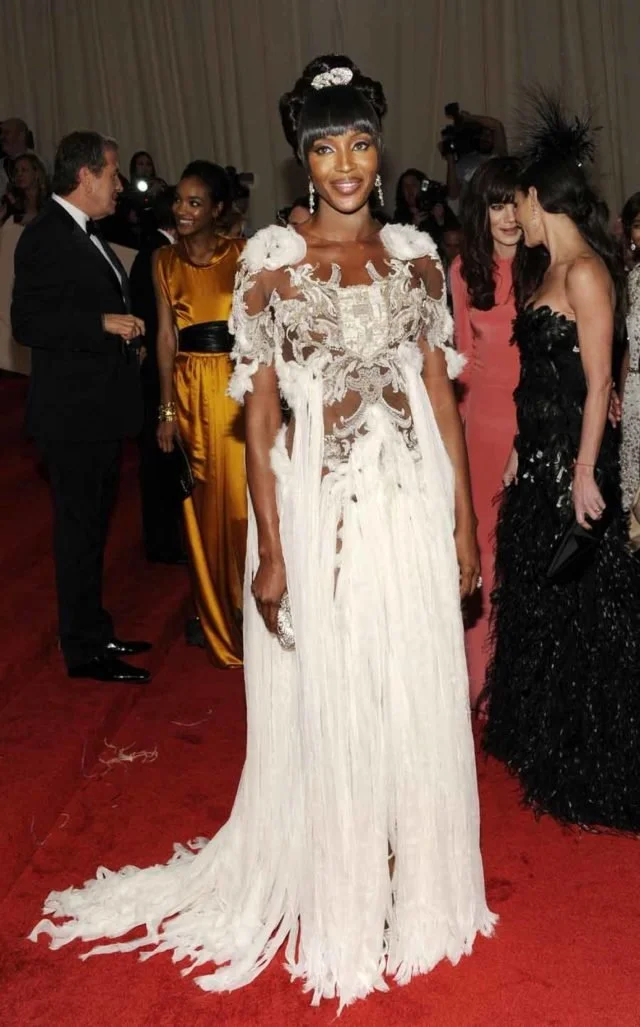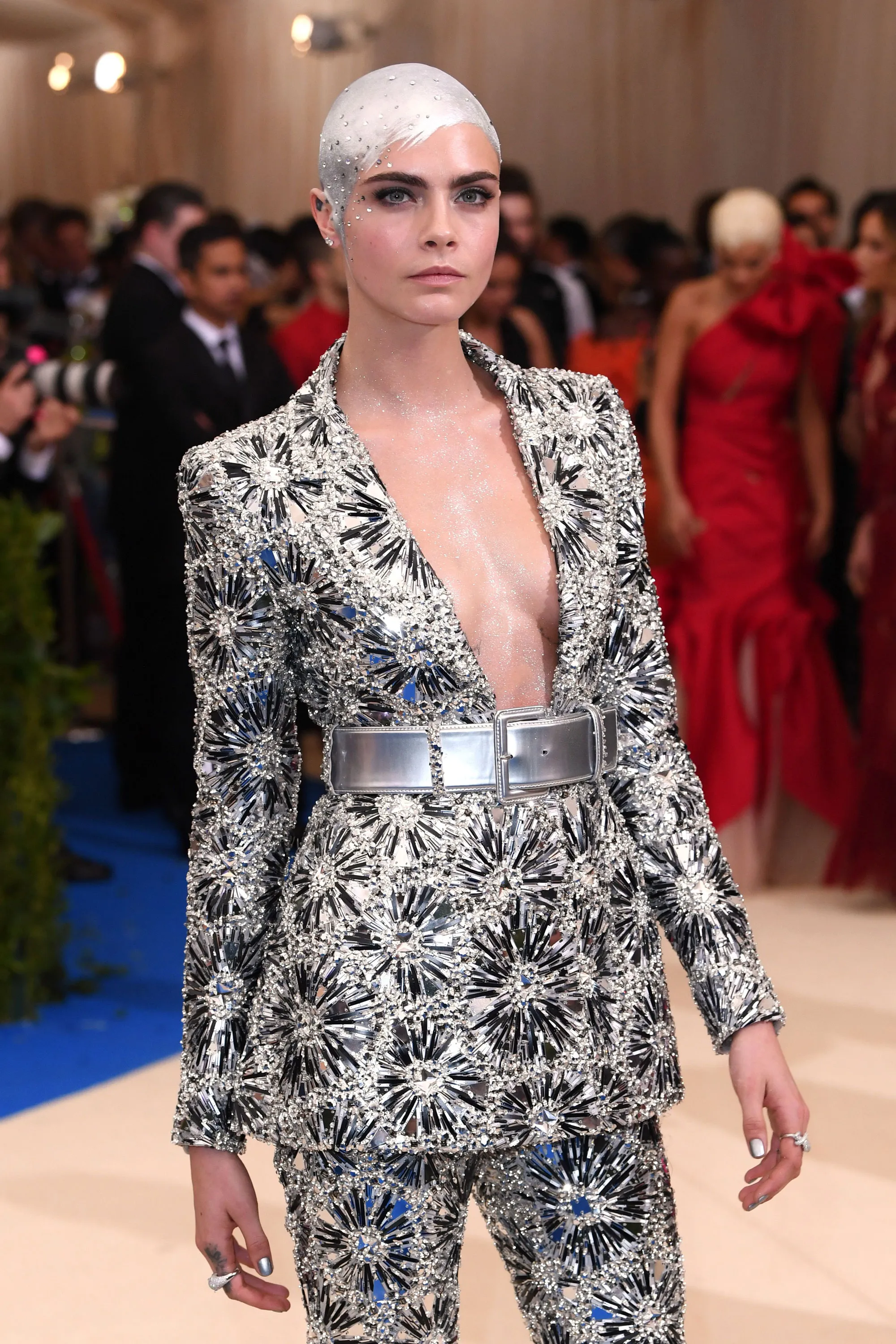MET GALA: THE MOST ICONIC LOOKS IN THE HISTORY OF ITS RED CARPET
We look back at the most memorable looks from the Met Gala, the most anticipated fashion event of the year, and its iconic red carpet.
Since its creation in 1948, the Met Gala has evolved from a charitable dinner for the Costume Institute into one of the most spectacular events in the fashion world. Diana Vreeland, former editor of Vogue, introduced the idea of an annual theme in 1973, and since then, every first Monday of May has become a true parade of art, culture, history, and self-expression through fashion.
Each edition has left a mark with styles ranging from the sublime to the utterly theatrical. It is not just a red carpet but a conceptual runway where designers and celebrities experiment and make history. Here, we take a look back at some of the most memorable looks that have shaped the history of the Met Gala.
Queens of the Red Carpet
Sarah Jessica Parker
Few celebrities have understood the Met Gala quite like Sarah Jessica Parker. For her, fashion is neither costume nor ornament: it is narrative, it is history, it is tribute. Each of her appearances is an offering to the event's theme, but also a deeply personal interpretation of aesthetics as an emotional and political vehicle. If there has ever been an ambassador of the concept beyond fashion, it’s her.
2006
Sarah Jessica Parker created one of the most iconic moments in Met Gala history by appearing arm in arm with Alexander McQueen. Both wore tartan ensembles the quintessential symbol of Scottish tradition perfectly aligned with that year’s theme: Anglomania: Tradition and Transgression in British Fashion. Parker wore a delicate tulle and lace dress, layered under a structured tartan coat that sharply contrasted with the ethereal look underneath. The result was a masterful blend of romance and rebellion, of classic elegance and the punk spirit that so deeply defined McQueen’s work.
The outfit wasn’t merely a stylistic choice it was a conceptual statement: a celebration of British heritage, of the designer as a subversive figure, and of fashion as a vehicle for cultural expression. Their collaboration marked a high point in the relationship between celebrity and designer, turning the red carpet into a stage where tradition and irreverence could coexist freely. To this day, that look remains a brilliant example of how to honor the theme without losing one's own voice.
2013
Sarah Jessica Parker once again proved her mastery in interpreting the Met Gala themes with creativity and intelligence. Under the theme Punk: Chaos to Couture, the actress paid tribute to the rebellious spirit of punk but through a lens of unexpected sophistication. Her look was a striking collaboration between designer Giles Deacon, who crafted a voluminous gold-printed silk gown, and legendary milliner Philip Treacy, who designed a dramatic feather mohawk headpiece in black and gold, evoking a warrior’s crown.
Rather than opting for studs or leather, as many other celebrities did that evening, Parker approached the punk aesthetic through the language of high fashion, elevating its codes of defiance to something almost ceremonial. The contrast between the luxurious gown and the radical headpiece created a fascinating visual tension, further amplified by knee-high Christian Louboutin boots that boldly completed the look.
More than a rebel without a cause, Parker embodied an urban queen a mythological figure dressed in elegant chaos. Her outfit didn’t just respect the anarchic spirit of punk; it transformed it into a visual narrative of power, individuality, and contemporary royalty.
2014
Black and white became the focal points of one of Sarah Jessica Parker's most iconic Met Gala appearances. Wearing a gown by Oscar de la Renta that seemed straight out of a futuristic ballet, the actress paid tribute to American couture and the history of fashion. The voluminous duchess satin skirt, with its wide, grid-patterned train, seemed to capture the essence of Charles James’s technical precision, the genius honored by the exhibition that night.
The blood-red embroidery of the designer's name on the train was not just a decorative detail but a signature on a masterpiece. The inscription transformed the garment into a living canvas, a tribute to traditional couture and craftsmanship. To complete the look, Parker chose long gloves and a polished hairstyle, adding a touch of classic sophistication that contrasted with the dramatic gown.
The outfit not only celebrated James’s legacy but also the power of fashion to tell stories through aesthetics. With each step on the red carpet, Sarah Jessica Parker transformed the dress into a statement of respect for history while simultaneously asserting the ongoing relevance of haute couture.
2018
The Heavenly Bodies: Fashion and the Catholic Imagination Met Gala provided the perfect stage for Sarah Jessica Parker to elevate fashion to almost divine levels. Wearing a gold dress by Dolce & Gabbana, rich with sacred iconography, the actress paid a theatrical tribute to Baroque and religious art. The design, which featured intricate embroidery and details inspired by the architecture and altarpieces of Renaissance churches, appeared as if it had been taken directly from one of the world’s most opulent churches, yet with a contemporary, feminine sensuality only Parker could bring.
The highlight of her look was the crowning piece: a gold headpiece adorned with crosses and sacred symbols, which not only evoked royalty but also religious devotion. This imposing crown transformed the actress into a nearly mystical figure, an ambulatory altar walking down the red carpet. Rather than merely representing Catholicism, her look was a luxurious and theatrical reinterpretation, brimming with symbolism and visual power.
Each element of Parker's creation, from the dress to the accessories, not only celebrated the opulence of the church but also turned fashion into an act of artistic worship, taking spirituality and aesthetics to new heights. With each step, Sarah Jessica Parker not only dazzled but turned the red carpet into a kind of sacred stage, challenging fashion conventions with a perfect blend of history, art, and provocation.
Kim Kardashian
There are bodies that wear fashion, and bodies that become fashion. Kim Kardashian belongs to the latter. At every Met Gala, her presence goes beyond the dress she wears, she is a statement in herself. Sculpted, media-driven, and transformed, her figure serves as a symbolic surface where debates about power, fame, and aesthetics are projected. She doesn’t just walk the red carpet, she embodies a narrative where fashion becomes a total spectacle.
Far from seeking mere approval, Kardashian uses controversy and excess as tools of visibility. Her style is a choreography between the iconic and the provocative, a constant dialogue with pop culture and its tensions. Each of her appearances at the gala is a carefully staged scene, a visual reflection on what it means to be seen and desired in an era obsessed with celebrity.
2019
When Kim Kardashian appeared at the 2019 Met Gala, it seemed she hadn’t stepped out of a limousine, but out of a wave. Dressed by Thierry Mugler, in his first design in two decades, she looked like a modern-day Venus, soaked in desire and styled to the very edge of human form. The nude latex dress clung to her body like a second skin, evoking a figure straight out of a pulp fantasy. Hanging from it were crystals that mimicked drops of water, a visual illusion so effective it seemed she was perpetually dripping wet.
It was more than fashion, it was sculpture, illusion, a theatrical performance of the body. The wet look effect required eight months of design and testing, and a corset so restrictive that she couldn’t sit down. Her impossibly small waist, achieved with extreme undergarments, sparked debates about fame-driven beauty standards, the limits of body modification, and the glorification of the unattainable silhouette.
The theme that year, Camp: Notes on Fashion, celebrated artifice, exaggeration, and aesthetics as parody. And Kim didn’t just understand the concept, she embodied it. Her look spoke of hypersexualization, of pop culture pushed to the extreme, of how the female body can become a site of social projection. It was a vision of desire, frozen in latex and crystal, as controversial as it was unforgettable.
2022
Few dresses have sparked as much debate as the one Kim Kardashian chose for the 2022 Met Gala. In a move that blended history, spectacle, and provocation, she decided to wear the original design Marilyn Monroe wore in 1962 to sing "Happy Birthday, Mr. President" to John F. Kennedy. It was an invaluable archival piece, created by Jean Louis, made of nearly invisible tulle and adorned with over six thousand hand-sewn crystals. Until then, the dress had been preserved at the Ripley’s Believe It or Not! museum, considered too fragile to be displayed for long periods.
The relocation of the garment, its use on the red carpet, and the body modifications Kim underwent to fit into it such as rapid weight loss triggered a wave of criticism. Conservators, fashion experts, and archive enthusiasts spoke of sacrilege, irresponsibility, even irreparable damage to heritage. Still, the appearance became one of the most talked-about moments of the night and the entire year.
Beyond the scandal, the gesture was symbolically powerful: Kim was rewriting the narrative of the American myth. She took the most iconic figure of Hollywood's golden age and clothed it in the present, shifting the focus to her own body. Like Marilyn, she is also a figure shaped by the public gaze, an object of desire, judgment, and myth-making. Her act was not innocent: it was a declaration about fame, archives, power, and identity in the 21st century.
2023
The tribute to Karl Lagerfeld, titled Karl Lagerfeld: A Line of Beauty, was the perfect occasion for Kim Kardashian to celebrate the influence of the Kaiser of fashion, but she did so with a piece full of history and symbolism. The ensemble, designed by Schiaparelli, consisted of layers of pearlescent beads cascading over her figure, a piece that, while evoking Lagerfeld’s style, also played with fashion history. The choice of Schiaparelli, a house that historically rivaled Chanel, created a powerful irony, as Coco Chanel and Elsa Schiaparelli shared a famous feud, marked by radically different approaches to fashion.
The garment was not only a tribute to Lagerfeld but also a contemporary reinterpretation of luxury and opulence. The pearls, a recurring symbol in Chanel’s aesthetic, transformed into a waterfall that not only covered the body but also adorned it like a living jewel, nodding to the artisanal tradition of haute couture. Schiaparelli, with her bold vision, added a layer of theatricality that departed from the minimalism Lagerfeld embraced during his years at Chanel, highlighting the historical rivalry with elegance and extravagance.
2024
Kim Kardashian once again became the center of attention at the 2024 Met Gala, reaffirming her status as one of the event’s most talked-about figures. This year, the entrepreneur and reality TV star stunned in a handcrafted Maison Margiela creation designed by John Galliano. The gown looked as if it had stepped out of a dark fairytale, inspired by the romantic and decadent aesthetic of Sleeping Beauty.
The ensemble featured a structured corset made from antique silver brocade that sculpted her silhouette to the extreme, framing her waist with almost architectural precision. The richly adorned metallic overskirt displayed intricate lacework intertwined with flowers, leaves, pearls, silver chains, and mirror fragments, evoking the image of a magical armor dusted with enchanted jewels.
One of the most talked-about details was the thistle-washed cashmere cardigan draped over her shoulders. It was an unexpected piece that added texture and a sense of fragility to the otherwise dramatic look. To balance the gown's ornate details, Kim kept the styling minimal. Her platinum hair was tied back in a long, loose braid with a softly undone, romantic finish, and her makeup was kept subtle to highlight her radiant complexion.
With this look, Kardashian not only paid homage to this year’s theme titled "Sleeping Beauties: Reawakening Fashion" but also showcased her ability to reinvent herself and master the art of spectacle on the most influential red carpet in fashion.
This outfit joins the long list of memorable Met Gala moments for Kim, proving once again that whether loved or criticized, she always knows how to spark conversation.
JARED LETO
2018
Jared Leto made a major impression at the 2018 Met Gala by reimagining the figure of Jesus through the lens of high fashion. Dressed head-to-toe by Gucci, the actor and singer embraced the night's Catholic theme with bold theatricality, becoming one of the most talked-about attendees of the event.
His outfit featured a blue suit paired with an elaborately embroidered stole, topped quite literally with a striking golden crown of thorns. Far from a casual choice, Leto took the "Heavenly Bodies: Fashion and the Catholic Imagination" theme to heart, striking a perfect balance between symbolic reverence and contemporary fashion drama.
He didn’t walk the carpet alone: alongside Gucci’s creative director Alessandro Michele and singer Lana Del Rey, Leto formed a perfectly synchronized trio, both in spirit and in style. Before stepping onto the red carpet, the three posed for a private photoshoot that made it clear Michele and Leto looked like Gucci-clad twins, destined to share the spotlight.
Although Leto is known for his extravagant style even outside of major fashion events, his interpretation of the religious theme that night firmly cemented him as one of the standout stars of the 2018 Met Gala.
2019
Jared Leto became one of the undeniable stars of the 2019 Met Gala. Under the theme Camp: Notes on Fashion, where excess, irony, and drama were celebrated, the actor fully understood the concept and took it to the extreme. Wearing a long, high-neck red gown designed by Gucci and a striking diamond necklace, Leto captured everyone's attention when he arrived carrying a hyper-realistic replica of his own head.
His choice was inspired by Gucci’s Fall Winter 2018 runway show, where models walked the catwalk holding replicas of their own heads as accessories. While other guests opted for theatrical performances, like Lady Gaga with her multiple outfit changes or Billy Porter channeling Cleopatra, Jared chose an approach that provoked amazement, amusement, and even a slight chill among those present.
Although his red gown was already impressive on its own, the head accessory was the detail that elevated his look to another level. According to Susan Sontag’s definition of camp, where art is presented seriously but becomes exaggerated to the point of being amusing, Leto’s fake head fit perfectly. During his ride to the Met, the actor held the head through the roof of his limousine and once on the carpet, he joked around by tossing it to Shawn Mendes.
As a frequent Gucci collaborator and one of the boldest defenders of eccentric style in recent years, Jared Leto delivered a masterclass in embracing the spirit of camp. In a gala dedicated to excess, no one interpreted self-love better than he did, literally bringing himself as his own date.
2022
At the 2022 Met Gala, Jared Leto and Alessandro Michele captured attention by arriving dressed identically. Both wore a 1970s-style Gucci tuxedo, featuring wide black velvet lapels, slightly flared pants, and small floral bouquets embroidered over a pastel yellow background. Their choice was no coincidence but rather a reflection of their personal bond and their shared vision of fashion as a space for playfulness and irony.
Their proposal fit perfectly with the theme of the gala, "Gilded Glamour," blending references to traditional men's tailoring with the delicacy of 18th-century women's gowns. It also reflected Alessandro Michele’s philosophy at Gucci, where the lines between masculine and feminine are blurred and the past is reinterpreted to build something radically modern.
Jared Leto, who had already made headlines in previous editions with looks like his glam version of Jesus Christ or carrying a replica of his own head, once again reaffirmed his commitment to bold, provocative aesthetics. His appearance alongside Michele at this edition confirmed his place as one of the great boundary-pushers on the red carpet, capable of reinventing himself and dominating the scene with every appearance.
Lady Gaga
Lady Gaga has turned the Met Gala into her own personal runway. Since the beginning of her career, the singer has used the red carpet as an opportunity to challenge expectations around fashion and identity, fully embracing theatricality and playfulness.
2015
Lady Gaga’s appearance at the Met Gala under the theme China: Through the Looking Glass was a complex exploration of cultural fusion and theatricality. Designed by Alexander Wang, her outfit reinterpreted Eastern imagery from a Western perspective, blending elements of punk and Asian ceremonial fashion. Gaga wore a short, structured kimono with shimmering embroidery and wide shoulders, topped with an elaborate, imperial-inspired crown that evoked both Chinese nobility and glam-rock aesthetics.
The ensemble captured the spirit of the event: a reflection on how Western fashion has adopted, adapted, and at times misinterpreted symbols from non-European cultures. Gaga, aware of this delicate balance, turned her presence into a visual dialogue about appropriation, tribute, and spectacle. Her styling also spoke to her own chameleonic persona, capable of embodying countless identities without losing authenticity. In a year where the theme demanded both sensitivity and creativity, Gaga delivered both with her signature flair provocative, ironic, and dazzling.
2019
Lady Gaga turned the Met Gala into one of her most memorable performances, completely transforming the red carpet into a runway of changes and spectacle. Under the theme Camp: Notes on Fashion, the singer didn't just walk the carpet; she gave a four-act show, each one more impressive than the last. She started with a fuchsia dress by Brandon Maxwell, featuring large ruffles and an extravagant cape, but what made her a legend of the night were the multiple look changes she made before the audience's eyes.
From a monumental cape, she transitioned into a fitted pink dress, then to a simpler version of herself in a black ensemble, and finally to a surprising end with lingerie and fishnet stockings. Each transformation was not only a display of performative fashion but also a tribute to the concept of camp, with its mix of exaggeration, irony, and excess. Gaga didn’t just embody the theme; she lived it, merging fashion with the art of performance and taking the Met Gala to an entirely new level of theatricality.
Rihanna
In the contemporary history of the Met Gala, few names resonate with the impact of Rihanna. Each of her appearances has been a lesson in narrative style, a visual construction that transcends the codes of glamour to settle in the realm of the monumental. Rihanna does not simply wear clothes: she embodies stories.
2015
Rihanna’s appearance at the 2015 Met Gala, themed China: Through the Looking Glass, was nothing short of legendary. Draped in a majestic yellow cape gown designed by renowned Chinese couturier Guo Pei, she not only honored the theme but elevated it to the level of myth. The garment, which took two years to complete and weighed approximately 55 pounds, was a textile masterpiece. Hand-embroidered, trimmed with fur, and adorned with intricate beading, it flowed behind her like a golden dragon ascending the Met steps.
The color was no arbitrary choice. In Chinese tradition, yellow is reserved for emperors and symbolizes divine favor. Rihanna, with cultural awareness and refined vision, embodied that imperial energy. Her arrival wasn’t just a red carpet walk, it was a ceremonial procession. Unsurprisingly, the internet exploded: memes, illustrations, and digital tributes flooded social media. The cape became iconic.
Yet beyond the viral spectacle was a powerful message about cultural homage, fashion as art, and the ability of a single look to command global conversation. Rihanna didn’t just wear a gown, she made history with every step.
2018
Rihanna once again redefined spectacle at the Met Gala with her appearance at the edition titled Heavenly Bodies: Fashion and the Catholic Imagination. This time, she embodied a figure both powerful and controversial: a pope. Dressed by Maison Margiela under the direction of John Galliano, she wore an ensemble inspired by liturgical garments, featuring a papal mitre, jacket, and skirt completely embroidered with pearls, crystals, and baroque motifs. It wasn’t merely an elaborate costume, but a powerful visual statement.
The outfit transformed traditional Catholic symbols into elements of haute couture, challenging the power structures that have historically excluded women and particularly Black women from positions of spiritual authority. With this choice, Rihanna rewrote that narrative. She claimed religious symbolism not to mock it, but to elevate and reframe it from an empowered Afro-Caribbean perspective.
Her presence was a carefully constructed provocation: every detail was designed to spark dialogue between faith, art, and fashion. The red carpet became an altar, and Rihanna, a high priestess of a new aesthetic spirituality. Unsurprisingly, her look dominated headlines and social media, generating both debate and admiration. It was undoubtedly one of the most iconic and complex moments in Met Gala history.
Blake Lively
2018
At the 2018 Met Gala, Blake Lively captured everyone’s attention with one of the most elaborate and talked-about dresses of the night. The actress wore a majestic creation by Atelier Versace, a piece that, as she revealed weeks before the event, required over 600 hours of handcrafted work to complete.
The design was clearly intended to make an impact and pay tribute to the theme of the year, titled Heavenly Bodies: Fashion and the Catholic Imagination. It combined luxury, symbolism, and high-level craftsmanship. The structured, form-fitting corset was hand-embroidered with multicolored gems, creating a jeweled effect both in the front and the back.
The ruby-colored skirt, made from satin fabric with a majestic drape, extended beyond the floor and was covered with golden embroidery that added depth, texture, and a sacred aura of sophistication. The entire gown evoked the visual richness of church stained-glass windows or precious religious ornaments.
As a final touch, the actress wore an elaborate golden headpiece shaped like a halo, with a spiked design that crowned her low bun and directly referenced Catholic iconography, further emphasizing the celestial theme. Her makeup was subtle yet radiant, and the updo kept all the focus on the gown and the headpiece.
2022
As a co-host of the 2022 Met Gala, Blake Lively delivered one of the night’s most memorable moments in a stunning Atelier Versace gown. Inspired by New York’s iconic architecture and the Gilded Age theme, the design featured multiple layers, including a turquoise overskirt and a large salmon-colored bow that transformed into green, symbolizing the oxidation of the Statue of Liberty.
Every detail of the look paid tribute to the city: the embroidery on the dress referenced the Empire State Building, the skirt evoked the starry ceiling of Grand Central Station, and her crown nodded to Manhattan’s most iconic monument. Her makeup, created by Kristofer Buckle, featured warm, metallic tones that perfectly complemented the gown’s palette. A true homage to the city that has shaped her career.
Zendaya
With each appearance at the Met Gala, Zendaya has earned a special place in the collective memory of the event. Her bold style, always accompanied by a deep intention, moves away from the superficiality of fashion to pay tribute to historical figures, mythologies, or simply to fantasy brought to life.
2018
Zendaya surprised everyone with one of her most powerful appearances at the Met Gala, under the theme "Heavenly Bodies: Fashion and the Catholic Imagination." Instead of following the religious fashion conventions that had marked previous editions, the actress chose to transform a historical figure, Joan of Arc, into a modern representation of female power. Zendaya wore an armor ensemble designed by Versace, which reinterpreted medieval nobility with a futuristic touch. Her look combined the strength of a warrior with the sophistication of haute couture.
The armor, in brilliant metallic tones, not only represented historical struggle but also paid homage to the courage and resilience of women throughout history. The golden cape that completed the outfit evoked a sense of majesty, while the structured details of the garment merged medieval aesthetics with modernity. By integrating elements of Catholic symbolism and the medieval heroine, Zendaya created a contemporary reinterpretation that stripped the religious iconography of its solemnity and transformed it into a symbol of empowerment and female rebellion.
2019
Zendaya once again showcased her ability to surprise at the Met Gala, this time under the theme "Camp: Notes on Fashion." Her appearance was a vibrant tribute to the classic story of "Cinderella," but with a contemporary and empowering twist. Designed by Tommy Hilfiger, her crystal and satin blue gown evoked the traditional fairy-tale ball gown, while simultaneously representing a confident woman, ready to face the world with a touch of magic. The dress, which seemed to step right out of a fantasy story, was complemented by a glowing cape referencing fairy godmothers, while her carriage-shaped handbag completed the perfect scene.
What stood out the most was her entrance, accompanied by a “fairy godmother” who helped her transform in front of the audience, turning the red carpet into a theatrical stage. Throughout her walk, Zendaya not only wore fashion but also brought the concept of camp to life with a dynamic performance. Her look not only referenced the traditional tale but reimagined it through a modern lens, highlighting the strength and independence of a woman who takes control of her own destiny.
2024
In 2024, Zendaya, as co-host of the Met Gala, lived up to the high expectations placed on her, offering a memorable and daring fashion display. Her outfit, designed by John Galliano for Maison Margiela, was a masterpiece blending natural art with haute couture. She wore a dress in navy blue and green tones that evoked the serenity of the ocean and the richness of natural landscapes. The color palette not only paid tribute to the natural world but also seamlessly integrated with the theme of that year's edition, The Garden of Time, which explored the impact of nature on fashion.
The dress was complemented by a matching headpiece, reinforcing the atmosphere of a mysterious, aquatic world, creating a visual harmony between runway elegance and nature's aesthetics. With every detail, from the fluidity of the design to the delicate embroidery that evoked marine life, Zendaya transformed the red carpet into an extension of an imagined garden. Her look was not only a representation of fashion but also a visual homage to the deep connection between humanity and the natural environment. As always, Zendaya made the Met Gala a stage for creativity, fusing art, nature, and fashion into a haute couture proposal that will be remembered in the event's history.
Icons of Elegance and Originality
Cher (1974)
Cher is one of the most unforgettable figures in the history of the Met Gala. With each appearance, the singer and actress has dazzled with her ability to transform fashion into art and cultural statement, elevating it to a mythical dimension.
At the 1974 Met Gala, Cher broke the rules of elegance with a nearly transparent design by Bob Mackie. The dress, overflowing with sensuality, was adorned with feathers and details that made it an absolute reference for both romance and glamour. At the gala, which had the theme "Romantic and Glamorous Hollywood Design," Cher was not only the queen of the red carpet but also reaffirmed her role as a symbol of boldness and sexiness, all while maintaining an elegance that was beyond the ordinary. Through this look, her style was already beginning to set the standard for feminine power in fashion.
Jackie Onassis (1979)
Jacqueline Kennedy Onassis, an icon of style and elegance, made her official debut at the Met Gala in 1979, despite having previously served as co-chair of the exhibitions in 1976 and 1977. That year, the event paid tribute to the world of ballet with the theme Diaghilev: Costumes and Designs of the Ballets Russes, a nod to the opulence and theatricality of early 20th-century Russian stage productions.
For the occasion, Jackie chose the classic sophistication that always defined her: a strapless black gown by Valentino, paired with a matching ruffled shawl that delicately framed her shoulders. Without resorting to extravagance or costume, Onassis interpreted the evening’s artistic spirit through a simple yet impeccable silhouette, proving that elegance can be just as powerful as spectacle.
Her presence at the gala not only marked a memorable moment in the event’s history but also helped solidify the connection between New York high society, fashion, and the arts. A discreet yet significant appearance that, decades later, remains a benchmark of taste and sophistication.
Raquel Welch (1982)
On December 6, 1982, Raquel Welch stunned at the Met Gala with an appearance as bold as it was unforgettable. That year's event celebrated the Costume Institute's La Belle Époque exhibition, a tribute to the elegance and opulence of late 19th and early 20th century Europe.
Amid a guest list that included fashion icons like Diana Vreeland, Bill Blass, and Oscar de la Renta, Welch turned heads by defying traditional period attire. Instead of Victorian lace or Edwardian gowns, the actress chose a daring sequined leopard-print dress, elevating it with the unexpected touch of pearls merging old-world drama with a modern, provocative edge.
Her look was a fearless interpretation of the Belle Époque spirit, proving that glamour doesn't always come from following the rules, but from rewriting them with personal style.
Lady Di (1996)
Princess Diana made history by attending the Met Gala for the first time, becoming the first royal heir to walk its red carpet. Newly divorced from Prince Charles, she stunned in a daring midnight blue slip dress by John Galliano for Dior, marking the British designer’s official debut as creative director of the fashion house.
The look, both sensual and bold, was considered one of her iconic “revenge dresses,” defying royal protocol and revealing a freer, more confident Diana. Though she captivated guests, rumors swirled that she left before the ball began, fearing she might embarrass her young son, Prince William. That night, her look became one of the most unforgettable moments in Met Gala history.
Amber Valletta (2004)
Amber Valletta delivered one of the most theatrical and memorable looks of the night by channeling the exuberant spirit of Marie Antoinette. In perfect harmony with the theme of that year, “Dangerous Liaisons: Fashion and Furniture in the 18th Century,” the supermodel masterfully embodied the opulence of French Baroque with an ensemble worthy of the court of Versailles.
Her gown featured a corset by Maggie Norris and a voluminous skirt by John Galliano, combining to create a striking display of Rococo theatricality. The corset accentuated her silhouette while the skirt, adorned with colorful prints and ornamental details, served as a visual tribute to the extravagance of the most famous queen of the 18th century. Valletta wore a costume inspired by the age of powdered wigs and lace fans, embracing the era’s theatricality with an exaggerated hairstyle, pale makeup, and accessories that evoked aristocratic decadence.
What made the look so successful was her attitude. Amber balanced sophistication and indulgence with an ironic flair, as if she truly embodied the queen of excess. Her appearance became a favorite among fashion critics, who praised her commitment to the historical narrative and her bold sense of performance.
Charlize Theron (2006)
At the 2006 Met Gala, titled AngloMania: Tradition and Transgression in British Fashion, Charlize Theron dazzled in a voluminous red dress designed by John Galliano for Dior. The look, which evoked the glamour and boldness of British haute couture, became one of the most memorable moments of the night. Accompanied by Galliano, who was then the creative director of Dior, Charlize embodied the blend of tradition and transgression that defined the theme of the gala. Her dress, with its impeccable volume and structure, was a tribute to British fashion and Galliano's ability to merge history with innovation.
Kate Moss (2009)
In 2009, Kate Moss left an indelible mark on Met Gala history. It was the last time the supermodel set foot in the United States, and she did so in grand fashion as co-chair of the event alongside Marc Jacobs. That edition paid tribute to fashion muses under the theme "The Model as Muse."
That night, all eyes were on her. Not just because of her leading role, but because of the look she chose to embody the spirit of the evening. She wore a golden, shimmering, fluid-cut dress designed by Jacobs himself that draped effortlessly over her figure. The final touch was a matching headscarf that crowned the ensemble and gave her the aura of a modern Greek goddess, mysterious, powerful and unforgettable.
The impact was immediate. The image of Moss descending the steps of New York’s Metropolitan Museum became iconic. It was replicated in editorials, shared across social media and featured in countless best-dressed lists. It was more than just an outfit. It was a fashion statement, a living work of art. Since that night, the golden ensemble has remained etched in time as one of the most memorable looks in Met Gala history.
Naomi Campbell (2011)
In its controversial list of the “10 Worst Moments in Fashion,” Time magazine did not hesitate to include Naomi Campbell at the Met Gala, wearing a design by Alexander McQueen. The magazine wrote that "it was probably one of his bad days" and added that the dress "evoked a poorly hemmed Romanian ice dancing costume from the early ’90s." It was a harsh critique, especially considering the collaboration between two of fashion’s greatest names.
But Time may have overlooked something essential. McQueen was never about playing it safe. His creation was not just a red carpet gown but a statement that challenged the conventional definitions of elegance. With its bold silhouette, theatrical structure, and deliberate risk, the dress reflected McQueen's distinct visual language filled with symbolism and emotion.
Naomi, with her unmatched presence and confidence, did more than wear the dress. She brought it to life. It became a moment of artistic expression that went beyond the usual best-dressed standards and entered the realm of performance and provocation.
Maybe Time didn’t see it that way. But for those who understand McQueen’s radical genius, that look was not a failure. It was a misunderstood masterpiece and a powerful reminder that fashion is not always about beauty. Sometimes, it is about pushing boundaries, stirring emotions, and ultimately rewriting history.
Beyoncé (2015)
At the 2015 Met Gala, under the theme "China: Through the Looking Glass," the red carpet was transformed into a stage of fantasy and excess, where fashion dared to play with oriental aesthetics through a western lens of luxury. Among all the looks that night, one stood out in the collective memory for its boldness and refined sensuality: a Givenchy design covered from head to toe in tulle and embellishments.
The French fashion house, known for blending classic elegance with modern risk, created a dress that seemed carved from light. The sheer fabric clung to the body like a second skin, while the stones sparkled like constellations across the silhouette. It was an ultra-sexy proposal, yes, but also sophisticated, challenging the boundaries between revealing and sublime.
The styling completed the fantasy: a high ponytail that added tension and verticality to the look, paired with neutral-toned makeup that allowed the dress to take center stage. Givenchy's choice was no accident; it was a statement of intent. The look celebrated the female form in all its power, unafraid to seduce, to stand out, to make a mark on an era.
Cara Delevingne (2017)
In 2017, Cara Delevingne redefined the concept of boldness at the Met Gala. With her head freshly shaved for her role in Life in a Year alongside Jaden Smith, the model and actress chose to transform her new look into an unforgettable style statement. Rather than hiding her shaved head, she elevated it into a work of art: a dramatic layer of silver paint covered her scalp, giving her a futuristic and almost ethereal aura.
Her outfit choice was equally striking. Cara wore a brocade pantsuit designed by Chanel, from the Spring 2017 Haute Couture collection. Perfectly echoing the metallic sheen of her head, the ensemble exuded a blend of sci-fi futurism and editorial-worthy elegance, signature traits of the iconic French house.
A regular on the Met Gala red carpet, Delevingne had experimented with various styles over the years. However, that night in 2017 marked a turning point. She not only showcased her commitment to aesthetic transformation but also proved that true avant-garde fashion emerges when style and attitude merge into a singular vision.
Ezra Miller (2019)
His appearance on the red carpet, with makeup that multiplied his eyes and a mask that concealed his face, left everyone speechless. But few knew that the look had been conceived in complete secrecy.
Until the Friday before the event, only Jason Rembert (his stylist), Nicki Fioravante (his publicist), and Miller himself knew the details of the plan. It was only once talents like makeup artist Mimi Choi, hairstylist Sam McKnight, and nail artist Naomi Yasuda joined the team that the vision could truly come to life.
Designer Riccardo Tisci, who crafted the crystal-embellished pinstripe skirt suit for Burberry, had no idea how theatrical the entrance would be. Miller didn’t just wear fashion he performed it. Draped in a white cape and removing his mask to reveal an artfully altered face, the actor turned the red carpet into a stage.
The central idea was to explore transformation and challenge norms around identity and style. “Ezra has a very clear vision of himself,” said Rembert. That clarity fused with Tisci’s avant-garde direction for Burberry, resulting in one of the most memorable moments of the night. Only Lady Gaga matched his level of theatricality.
Harry Styles (2019)
When Harry Styles made his Met Gala debut in 2019, he was not only one of the night’s most anticipated guests but also one of its co-hosts, sharing the honor with Alessandro Michele, Lady Gaga, and Serena Williams. Under the bold theme Camp: Notes on Fashion, the event demanded an approach that was exaggerated, theatrical, and full of personality. Styles, known for breaking fashion boundaries, was the perfect choice to embody that spirit.
For the occasion, the British singer chose a look that perfectly captured the essence of camp: a custom-made ensemble by Gucci, the fashion house that has been instrumental in shaping his public image. He wore a sheer black blouse adorned with lace and ruffles, revealing his tattoos and blending provocation with romanticism. Loose-fitting trousers and heeled boots added drama to the outfit, while a delicate pearl earring offered a nod to classic elegance, reimagined with a touch of irreverence.
That night, Harry Styles did more than dress for the red carpet. He embodied the true spirit of the Gala: celebrating excess, irony, and beauty in its freest form.
Billy Porter (2019)
Billy Porter delivered one of the most unforgettable entrances in Met Gala history during the 2019 edition themed Camp: Notes on Fashion. He arrived elevated on a velvet and gold litter carried by six shirtless men, embodying the majestic Sun God and immediately capturing the attention of the red carpet.
His look, designed by The Blonds, featured a dazzling custom catsuit adorned with Preciosa crystals, chain fringe, and golden beads, topped with a 24-karat gold headpiece. While the ensemble evoked imagery of ancient Egypt, the true inspiration came from Diana Ross and her iconic costume montage in the film Mahogany. Ross’s dramatic Egyptian moment served as the creative starting point, later expanded with influences from Elizabeth Taylor’s opulence and the grandeur of Egyptian gods.
With his theatrical background and deep passion for performance, Porter embraced the night's theme effortlessly. "I’m a theater nerd and I understand what it means to be a performer. I am a performer," he stated. That night, Billy Porter did more than dress for an occasion; he became a living embodiment of excess, theatricality, and the very essence of camp.
Timothée Chalamet (2021)
At the 2021 Met Gala, Timothée Chalamet proved that few things are more American than a pair of Converse sneakers. As co-host of the event, alongside Billie Eilish, Amanda Gorman, and Naomi Osaka, the actor was one of the most anticipated names of the night, and he did not disappoint.
True to his bold style and constant challenge to traditional norms of men's fashion, Chalamet chose an outfit by his go-to designer, Haider Ackermann. The all-white look combined a blazer with black lapels, inspired by the costumes of the soldiers in Much Ado About Nothing (1993), with harem-style trousers adorned with jeweled brooches. The blend of tailoring and sportswear perfectly reflected the actor's innovative spirit.
However, the detail that truly captured the essence of the theme In America: A Lexicon of Fashion was his choice of footwear. Instead of opting for cowboy boots or classic red carpet shoes, Chalamet went for a simple pair of white Converse. This unexpected yet deeply symbolic gesture highlighted his ability to reinterpret dress codes and give prominence to an everyday icon of the "American way of life."
Used to wearing everything from rubber boots to pointed shoes on the red carpet, Timothée Chalamet once again surprised. With his look, simple yet full of meaning, he reaffirmed why he is one of Hollywood's leading figures in redefining modern masculinity.
BAD BUNNY (2024)
Bad Bunny made a striking statement at the 2024 Met Gala, themed "Sleeping Beauties: Reawakening Fashion." This theme focused on iconic fashion pieces that were once significant but are too fragile to be worn in the present day. The Puerto Rican artist, known for his bold and avant-garde style, paid homage to fashion history by blending classic and contemporary elements, merging them in a way that reflected both the theme and his personal style.
For this occasion, Bad Bunny took men's tailoring to an audacious level. His suit, designed by John Galliano for Maison Margiela, featured intricate stitching details that referenced the art of pattern-making and tailoring. The addition of red accents contrasted dramatically with the overall monochromatic look, adding a touch of drama and modern flair.
A reference to fragility, a theme also present in his 2023 Met Gala look, reappeared in the form of delicate flowers and petals. These were crafted from the same material as the suit, giving his appearance an ethereal, almost fragile quality. Bad Bunny’s outfit perfectly fused the past and present, offering a look that was both a historical tribute and an audacious, futuristic proposal.
The Met Gala is much more than a fashion event; it is a cultural phenomenon that shapes conversations about art, identity, and society. Each year, its red carpet transforms into a global stage where stories of power, religion, history, femininity, sexuality, and creativity unfold. It is a night dedicated to honoring the most influential designers, challenging aesthetic norms, and radically redefining the idea of what it means to dress well.
Every look presented at the Met Gala becomes a fleeting work of art that captures attention and leaves a lasting impression on the collective memory. Many of these outfits become milestones in fashion history, influence popular culture, ignite social debates, and push the limits of artistic and personal expression.
The Met Gala celebrates imagination, boldness, and human transformation. With each edition, it strengthens its position as a true reflection of our times. It remains provocative, inspiring, and captivating, proving that fashion at its most daring can drive cultural change and reshape how we see both the world and ourselves.


